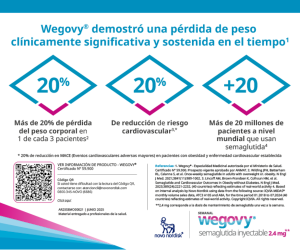The stress hyperglycemia, from claude bernard to nice-sugar, a moving target
DOI:
https://doi.org/10.47196/diab.v52i2.116Keywords:
stress hyperglycemia, mortality, acute myocardial infarctionAbstract
We know that glycemic control deteriorates significantly during the hospitalization of a patient with diabetes mellitus (DM). Hyperglycemia contributes factors such as stress, both psychic and physical, concomitant treatments, decreased physical activity, enteral or parenteral nutrition, medications such as corticosteroids and the fear of hypoglycemia by the doctor, while hypoglycaemia factors such as decrease in caloric intake, gastrointestinal diseases, errors in medication and cognitive alterations1.Although there may also be increased blood glucose in patients without prior DM; this hyperglycemia caused by diseases is called stress hyperglycemia.
References
Metchick LN, et al. Inpatient management of diabetes mellitus. Am J Med 2002; 113:317-323.
Kosiborod M, Inzucchi S, Clark B, et al. National patterns of glucose control among patients hospitalized with acute myocardial infarction (abstract 1018-183). J Am Coll Cardiol 2007; 49(9 suppl 1):283A-284A.
Frisch A, et al. Diabetes 58 (suppl 1) A27, 2009.
Kosiborod M, et al. Glucometrics in patients hospitalized with acute myocardial infarction: defining the optimal outcomes-based measure of risk. Circulation 2008; 117:1018-27.
Malmberg K, et al. Prospective randomised study of intensive insulin treatment on long term survival after acute myocardial infarction in patients with diabetes mellitus. DIGAMI (Diabetes Mellitus, Insulin Glucose Infusion in Acute Myocardial Infarction) Study Group. BMJ 1997 May; 24, 314(7093):1512-5.
Furnary AP, et al. Continuous intravenous insulin infusion reduces the incidence of deep sternal wound infection in diabetic patients after cardiac surgical procedures. Ann Thorac Surg 1999; 67:352-362.
Van den Berghe G, Wouters P, Weekers F, et al. Intensive insulin therapy in critically ill patients. N Engl J Med 2001; 345:1359-1367.
Malmberg K, et al. Intense metabolic control by means of insulin in patients with diabetes mellitus and acute myocardial infarction (DIGAMI 2): effects on mortality and morbidity. Eur Heart J 2005 Apr; 26(7):650-61.
Van den Berghe G, et al. Intensive insulin therapy in the medical ICU. N Engl J Med 2006 Feb 2; 354(5):449-61.
Finfer S, et al. Intensive versus conventional glucose control in critically ill patients. N Engl J Med 2009 Mar 26; 360(13):1283-97.
Umpierrez GE, et al. Randomized controlled trial of intensive vs conservative glucose control in patients undergoing coronary artery bypass graft surgery: GLUCO-CABG Trial. Diabetes Care 2015; 38:1665-1672.
2016 ADA Standards. Diabetes Care 2016; 39 (Suppl 1):S99-S104.
Downloads
Published
Issue
Section
License

This work is licensed under a Creative Commons Attribution-NonCommercial-NoDerivatives 4.0 International License.
Dirección Nacional de Derecho de Autor, Exp. N° 5.333.129. Instituto Nacional de la Propiedad Industrial, Marca «Revista de la Sociedad Argentina de Diabetes - Asociación Civil» N° de concesión 2.605.405 y N° de disposición 1.404/13.
La Revista de la SAD está licenciada bajo Licencia Creative Commons Atribución – No Comercial – Sin Obra Derivada 4.0 Internacional.
Por otra parte, la Revista SAD permite que los autores mantengan los derechos de autor sin restricciones.




























